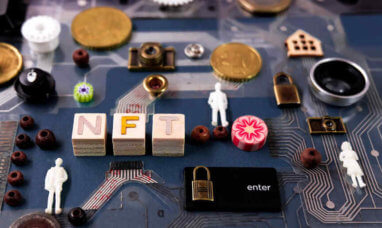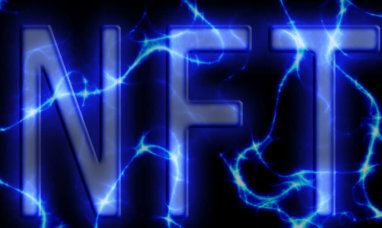You must have heard of bitcoins if you have been following cryptocurrency or fintech. Bitcoin is a peer-to-peer electronic cash payment system proposed by a person (or group) called Satoshi Nakamoto. Blockchain is the technology behind bitcoin, though Nakamoto himself did not use the term. Blockchain is inextricably linked with bitcoin but has many other independent uses.
Without further ado, let us learn more about Blockchain and how it works.
Blockchain Explained
A blockchain is a special kind of database. The databases we are familiar with, like Oracle, store data as rows and columns in tables. But a blockchain stores data in units called blocks. A block contains a set of transactions. When a block is filled, it is chained (attached) to the previous block. Thus, a chain of blocks is formed. The term “ledger” is often used to refer to a blockchain.
What makes a blockchain special is that it is not managed by a central authority like a bank or government agency. Instead, copies of the ledger are stored on multiple independent computers. No one entity controls the ledger.
A blockchain records information in a way that makes it difficult to alter. The technology enables individuals to deal directly and securely with each other (it is peer-to-peer). No intermediary like a government or bank is needed.
The list of transactions, called a block, is linked together using cryptography. Each transaction is verified by all the participants in the network, timestamped, and added to a chain of data. Once a block has been attached to the chain, it becomes immutable. It cannot be modified or deleted.
The Concept of a “Hash” in Blockchain
A hashing function takes an input having a variable length and outputs a value with a fixed length. The SHA-256 is an example of a hash function. If you input any text to it, be it a letter or a dictionary with millions of words, it will output a number that is 256 bits long. The output is called a hash.
A good hashing function has some desirable qualities. It must always give the same output for the same input and should compute quickly. It should be one-way, i.e., given the hash, you cannot get back the input text. Different inputs should not generate the same hash.
Hashes are used extensively in blockchains. When a block is added to the blockchain, the transactions in it are hashed, and the hash is stored too. If any of the transactions are then tampered with, the hash will no longer be valid. Tampering can therefore be easily detected.
What Does a Blockchain Look Like?
Each block contains a block number, the hash of the previous block in the chain, the timestamp of when it was created, a list of transactions, a nonce (which is a somewhat arbitrary number), and a hash for this block. The hash for the current block is calculated from the hash of the previous block, the transactions in this block, and the nonce.
Distributed
A blockchain is not stored on a single computer. It is duplicated and stored in every computer (also called a node) that is operated by a participant in the blockchain. Every transaction is recorded in the blockchain stored on every node. The blockchain, or ledger, is not centralized but distributed. So blockchains are also referred to as Distributed Ledger Technology (DLT).
Types of Blockchain Networks
Blockchains may be configured to be Public, Private, Permissioned, or Consortium.
-
-
- A Public blockchain allows anyone to join and take part in the core activities of the network. Everyone can read from and write to the ledger and audit all transactions. Bitcoin and Ethereum are examples.
- A Private blockchain only allows a select group of verified participants to join the network. It is usually governed by one organization. The network owner decides what permissions to give each participant. Examples are Hyperledger Fabric and Ripple.
- A Permissioned blockchain is a cross between Public and Private blockchains. Anyone can join, but only after they have been vetted. Permissions are given on a case-by-case basis. A primary assumption is that a permissioned blockchain is a closed network.
- A Consortium blockchain is set up by organizations when all participants need to be permissioned. All the participants share responsibility for maintaining the blockchain. BankChain and IBM FoodTrust are examples.
-
How Does Blockchain Work?
This works a bit differently across different blockchains. But this is generally how transactions get added to the blockchain.
-
-
- Every transaction recorded is first held in a transaction pool
- Specially assigned nodes (called “miners” in the Bitcoin network) collect the transactions and form a “candidate” block.
- The candidate block contains the hash of the previous block.
- The block is sent to all the nodes in the network
- The network has a voting mechanism. If there is agreement (consensus) among the network nodes, the newly created block is timestamped and added to the blockchain.
- All copies of the ledger are updated to reflect the newest block.
-
Pros and Cons of Blockchain Technology
Here are some of the pros and cons of blockchain technology:
Pros
Disintermediation and Decentralization
Blockchain disintermediation is the reduction in the number of intermediaries in a transaction. No central authority (like a bank) is needed. Doing away with intermediaries results in cost and time savings. It also increases trust in the system.
High-Quality Data
Every entry to the blockchain is approved by a consensus process. This filters out bad or incorrect data and ensures that only correct data is written.
Transparency
All transactions on a blockchain are recorded on all computers on the network. Blockchains are completely transparent because details of all transactions are visible to everyone.
Immutability
Every single block in the chain has a hash associated with it. The hash is derived from the transactions in the block as well as the hash of the previous block. If any of the transactions are tampered with, the hash would no longer be valid. This would be detected immediately. The hash itself cannot be changed as later blocks use the hashes of the previous blocks. Hence the blockchain is immutable and therefore tamper-proof.
Integrity and Security
Every transaction must be confirmed by a majority of the network nodes and recorded across the entire blockchain. So there is no possibility of a rogue node manipulating or altering any information.
Cons
Poor Performance
Every node on the network has a full copy of the ledger. When a new transaction is recorded, all nodes on the network need to update their ledger. This redundancy leads to poor performance. A faster alternative to blockchain is dagchain. Dagchains are discussed later on.
Private Keys
Every user on the network must have a public key and a private key. The private key is confidential to the user and must be hidden in a secure location. It must also be rotated (changed) from time to time. Loss of the private key means loss of all assets belonging to the user, with no provision for recovery.
Lack of Capable Technical Staff
Blockchain technology is new and complex. There aren’t many software developers who are knowledgeable in core concepts like cryptography. So, when companies try to build blockchain solutions, they find it difficult to form a competent team.
Large Energy Footprint
Every transaction needs to go through a consensus process. Some consensus algorithms (like Proof of Work used by Bitcoin) are especially computation intensive. A lot of communication takes place between nodes during the consensus process. All this results in high energy consumption.
Anonymity Helps Crime
Criminals like to use cryptocurrencies like bitcoin because of the privacy and secrecy they provide. They also target holders of bitcoin for extortion. Customers of Silk Road, a site on the dark web, used bitcoin for selling drugs and other illicit services before being shut down by the FBI. Colonial Pipeline recently paid $4.4 million in cryptocurrency to unlock its computer systems after being subjected to a ransomware attack.
The Future of Blockchain Technology
Blockchain technology has widespread application and is catching on fast across several industries. Here are some areas in which blockchain is already being used.
Identity Management
Identity Management is the set of processes an organization uses to identify, authenticate and authorize someone to access services within the organization. Paper-based identity is subject to theft or fraud. Digital identity, stored centrally, is a target for hackers. When blockchain technology is used, identity information is securely stored and is easily auditable and verifiable. Individuals can control the personal data they share. Issuers can instantly verify credentials.
Cross-Border Payments
Cross-border transfers are among the most inconvenient consumer transactions. The processing times are lengthy and unpredictable, there are exorbitant fees, and there is a lack of transparency. One reason for this is the high number of banks that serve as intermediaries. Blockchain allows transactions to be securely recorded in a distributed ledger without involving any intermediaries. RippleNet, built on blockchain, can transfer money in about 3 seconds at a cost of about 1%. Traditional transfers take several days, and costs hover around 6%.
Smart Contracts
Smart contracts are software programs that run on a blockchain when certain predefined conditions are met. They automate the execution of an agreement. Some of the actions which can be automated are the release of funds, shipping an item, sending a message, and unlocking digital content. Smart contracts are fast and efficient because they are digital and automated. There is no paperwork to process and no need for follow-ups or reminders.
Supply Chain
Conventional supply chain implementations suffer from a host of issues. The use of blockchain increases transparency and reduces cost and risk in the supply chain. The traceability of material in the supply chain increases. Visibility and compliance improve. Administrative costs decline. Assets can be digitized and stored in the blockchain and tracked from manufacture to delivery. This reduces fraud and the risk of counterfeiting.
Shipping
A Bill of Lading (BoL) is a legally binding document given by a shipper to a carrier. It describes the goods being shipped and is a combination of receipt, contract, and title. Paper BoLs have been used for centuries. There are associated drawbacks, including the risks of the document being lost or forged. Companies have slowly been moving towards electronic Bills of Lading. They are less prone to tampering, faster, and less expensive to process. Putting them on a blockchain was the logical next step.
New blockchain applications are emerging every day. Blockchain technology has the potential to transform every facet of our lives. Truly, limitless blockchain technology is here to stay.
Online Brokers Who Deal in Cryptocurrencies
Many brokers sell cryptocurrencies. Some of them are traditional brokers who offer stocks and bonds as well. Others are crypto exchanges which only trade in digital currencies. Some sell cryptocurrencies directly, while others sell only futures.
The table below lists the most popular brokers.
Broker
Crypto
Stocks and Bonds
Commission per trade
Account Minimum
Robinhood
Yes
Yes
0
0
TD Ameritrade
Bitcoin futures
Yes
$2.25 per contract
$25000
Interactive Brokers
Bitcoin futures
Yes
$15.01 per contract
0
Charles Schwab
Bitcoin futures
Yes
$1.50 per contract
0
Trade Station
Bitcoin futures
Yes
0.05 to 0.3%
0
Coinbase
Yes
No
Steep (at least 1.99% of transaction value)
0
eToro
Yes
Yes
Depends on the currency
Varies
Kraken
Yes
No
Varies
Varies
Most brokers, including the ones listed above, require some minimum balance to trade in futures. The fee charged also depends on the account balance.
When selecting an online broker, one should consider three factors. Their website should be safe and provide integrated safe wallets. It should be user-friendly. The broker should deal in a range of cryptocurrencies.
DAG Chain vs. Blockchain
We introduced the term DLT (Distributed Ledger Technology) earlier. DLT is a broad term and includes several technologies. Blockchain is one of them. DAG, or Directed Acyclic Graph, is another one.
In a blockchain, a set of transactions are bundled into a block. A new block is chained to the earlier block. In programming parlance, a blockchain is a linked list data structure.
In a DAGchain, there are no blocks. Individual transactions are linked to one or more other transactions. The DAG uses a tree data structure.
A DAG is faster, more scalable, and cheaper compared to a blockchain.
Blockchain and Trust
While blockchain technology is fascinating, its primary value is that it guarantees trust across a business network. When you send money to, say, John, in another state, you do so through an intermediary, usually a bank. You and John may not trust each other, but both of you trust the bank. But using the bank has disadvantages, as we have seen. When the same transaction is carried out over a blockchain, you do not need an intermediary. This is because the very nature of blockchain – distributed, secure, transparent, and immutable – makes trust irrelevant.
Featured Image: Megapixl








